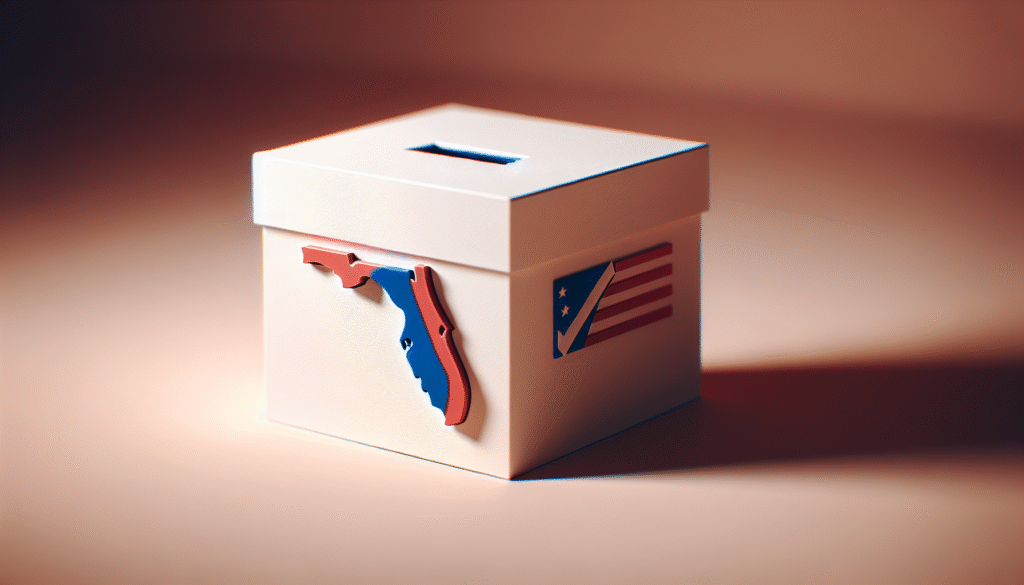Have you noticed how the political landscape in Central Florida has been shifting and wondered what that might mean for future elections?
Central Florida’s Political Shift and Its Implications for Future Elections
You’re looking at a region that has been changing rapidly—demographically, economically, and politically—and those changes matter for the balance of power in statewide and national contests. This article walks through what’s driving the shift, how different counties are moving, what issues are most influential, and what the implications are for future elections and campaign strategy.
What do we mean by “Central Florida”?
You may think Central Florida is just Orlando, but it’s a larger, interconnected area that includes a mix of urban cores, suburbs, exurbs, and rural pockets. Understanding the region requires looking at counties like Orange, Osceola, Seminole, Polk, Lake, Volusia, Brevard, and surrounding areas, each with distinct demographics and political dynamics.
Why Central Florida matters politically
You’ll find that Central Florida has been pivotal in deciding statewide races and shaping national strategies because it contains a blend of voters that reflect broader national trends: fast-growing Hispanic communities, transplants from other states, younger urban professionals, and older retirees. How campaigns perform here can be a bellwether for broader shifts in the Sun Belt and other growing regions.
How Central Florida has changed in the last decade
You’re seeing population growth, new industries, and migration patterns that alter the electorate’s composition and priorities. Over the last ten years, in-migration from Northeast and Midwest states, growth in Hispanic populations of diverse origin, and the effects of tourism and tech employment have reshaped communities and voting behavior.
Population growth and migration patterns
You’ll notice both domestic migrants (people moving from high-cost Northeastern and Midwestern metros) and international migrants adding to Central Florida’s population. These movers bring political preferences, cultural ties, and economic priorities that can change the local electoral mix.
Urbanization and suburban shifts
You may see urban cores like Orlando getting younger and more diverse, while suburbs have become the new political battlegrounds. Suburban voters’ priorities—schools, public safety, housing costs—can swing elections when turnout is high.
Economic drivers: tourism, tech, and construction
You should remember that tourism remains central to the region’s economy, but tech firms, distribution centers, and construction have added jobs and attracted new residents. Economic concerns—job stability, wages, and cost of living—now often top the list of voter concerns.
The Hispanic and Latino electorate: not monolithic
You’ll need to treat “Latino” as a broad umbrella that includes Cuban, Puerto Rican, Venezuelan, Colombian, Mexican, and other origins—each group has different histories, policy priorities, and political leanings. Winning here requires tailored engagement rather than a one-size-fits-all message.
Puerto Rican migration and political consequences
You may have noticed significant Puerto Rican migration to parts of Central Florida, particularly Osceola and surrounding counties, following disasters and economic hardships in Puerto Rico. These voters often prioritize issues like disaster relief, healthcare, and economic stability, and historically lean Democratic, though turnout and engagement can vary.
Cuban and other Hispanic groups
You should understand that Cuban Floridians have historically leaned more Republican in South Florida, but Central Florida’s mix includes more diverse Hispanic groups who may not follow the same patterns. Venezuelan and Colombian migrants may prioritize anti-authoritarian messaging and economic stability, shifting toward candidates who speak to those themes.

Recent electoral trends up to 2022
You’ll want to use the last several election cycles to see trends: presidential results, gubernatorial contests, and midterm outcomes all provide clues about shifting allegiances. Through the 2010s and into the early 2020s, Florida as a state moved more Republican at the statewide level, while urban counties became more Democratic—Central Florida sits at the intersection of those forces.
County-level tendencies and shifts
You’ll find that different counties within Central Florida have moved differently; some have become reliably red, others steadily blue, and some remain true battlegrounds. Below is a table summarizing general tendencies and recent shifts that you can use to orient your understanding.
| County | General Political Tendency (2010s) | Recent Shift (2016–2022) | Key Factors |
|---|---|---|---|
| Orange | Democratic (urban) | Became more reliably Democratic | Growing urban population, younger voters, service and tech workers |
| Osceola | Swing to Democratic (2016–2020) | Competitive; local issues sway voters | Puerto Rican migration, working-class concerns |
| Seminole | Republican-leaning | Trending slowly more competitive | Suburban growth, new residents from other states |
| Polk | Republican-leaning | Firmly Republican in many races | Rural and exurban demographics, older voters |
| Lake | Republican-leaning | More solidly Republican | Suburban/rural mix, older white voters |
| Volusia | Battleground | Fluctuates with turnout and local issues | Mixed suburban/rural electorate |
| Brevard | Republican-leaning | Republican-leaning, with pockets of swing | Aerospace industry, retirees |
Note: This table synthesizes general trends up to mid-2022 and is intended to orient your sense of the region rather than serve as a precise electoral map.
How issues shape votes in Central Florida
You’ll find that certain issues consistently affect voter decisions: the economy, public safety, education, healthcare, and immigration. Local versions of national debates—like school curriculum content or public safety—often have outsized influence on suburban voters.
Economy, jobs, and inflation
You’ll be aware that economic anxiety has been a top concern, especially with inflation and the rising cost of housing. Voters often reward candidates who present credible plans for cost management, job growth, and support for small businesses.
Public safety and crime
You should recognize that concerns about crime, policing, and local public safety have become salient, particularly among suburban families and older residents. Messaging that highlights safe neighborhoods and effective policing can sway undecided voters.
Education and parental rights (local school issues)
You’ll notice that debates over school policy and curriculum have mobilized parents and community activists. Education-related campaigning—on issues from school choice to classroom content—has proven influential in local races and can boost turnout in midterms.
Immigration and cultural questions
You’ll understand that immigration remains a strong motivator, especially in counties with higher recent migrant populations. Messaging matters: immigration framed in economic or humanitarian terms can resonate differently across Latino subgroups.
The role of redistricting and electoral rules
You’ll want to account for how redistricting after the 2020 Census reshaped congressional and legislative districts in Florida, often creating more secure seats for one party or the other. Changes to ballot access, voting rules, and administrative practices can also shift the playing field for future contests.
How district lines influence competitiveness
You’ll see that when district boundaries cluster like-minded voters, competitiveness decreases. But even in “safe” districts, local races and ballot measures can be contested intensely and influence down-ballot turnout.
Voting rules and turnout mechanics
You should be aware that changes in early voting windows, mail ballot rules, and voter registration drives will continue to shape who actually votes. Grassroots operations that register, educate, and get voters to the polls remain crucial.
Campaign strategies that work in Central Florida
You’ll find that successful campaigns combine broad coalitions with micro-targeted messages. Voters respond to credibility on pocketbook issues and to local engagement that feels personal and sustained.
Messaging: economy, safety, and local issues
You’ll want to prioritize practical messages: clear plans for jobs, affordability, and safety resonate across many demographics. Candidates who communicate local solutions rather than national talking points tend to build trust.
Targeting diverse Hispanic communities
You should approach Hispanic outreach with nuance: language, cultural references, and issue priorities differ by country of origin and length of residency. Community leaders, local media, and trusted institutions can be critical partners.
Ground game and turnout operations
You’ll benefit from investing in field operations, especially in swing suburbs and pockets of high potential turnout. Door-to-door canvassing, phone/text outreach, and local events remain effective ways to build relationships and boost participation.
Digital advertising and persuasion
You’ll see that digital microtargeting—combined with traditional outreach—allows campaigns to reach specific demographic slices with tailored messages. Authenticity and consistency are important in maintaining trust online.

Scenarios for future elections
You’ll want to think in scenarios, as futures are contingent on multiple trends. Below are a few plausible paths that Central Florida could follow in coming cycles.
Scenario 1: Continued Republican consolidation
You may find that if demographic gains among GOP-leaning transplants continue and if Republican messaging on economy and cultural issues resonates, Republicans could maintain or expand their advantage in statewide contests. Redistricting and voter rule changes would amplify this effect.
Scenario 2: Democratic recovery in suburbs
You should consider that Democrats can win back ground by focusing on suburban priorities—affordability, schools, and public safety—while investing heavily in turnout among young voters and Hispanic subgroups. Local candidate recruitment and credible moderate policy platforms would be central.
Scenario 3: Highly competitive, issue-driven battleground
You’ll notice that a middle path is possible where competitiveness remains high: localized issues and turnout swings could decide races in different cycles. In this scenario, both parties would invest heavily, and small margins could determine outcomes.
Implications for statewide and national politics
You’ll realize that changes in Central Florida ripple outward: winning here can be decisive for Florida’s statewide outcomes and influential for national strategies for both parties. The state’s electoral votes and congressional seats make these counties a focus for national investment.
For statewide candidates
You’ll see that candidates must be disciplined and adaptive: a statewide message needs regional specificity to resonate in Central Florida. Building coalitions that combine urban, suburban, and rural voters is essential.
For national parties
You should recognize that national parties will pour resources into Central Florida as part of broader Sun Belt strategies, testing messaging and voter tech that can be applied elsewhere. The region serves as both a laboratory and a prize in presidential campaigns.
What local leaders and activists should do
You’ll want concrete steps if you’re a local activist, community leader, or candidate. The following actions can strengthen your influence and improve electoral outcomes.
Invest in long-term engagement
You should prioritize relationships, not just transactions; sustained presence in communities builds trust and turnout over time. That means regular community events, listening sessions, and responsive constituent services.
Build cross-cutting coalitions
You’ll benefit from forming coalitions across age, ethnic, and economic lines to tackle local issues like housing and transportation. These coalitions can translate into broader political support.
Focus on voter registration and education
You should make voter registration and civic education ongoing priorities, especially among younger and newly settled residents. Educated voters are more likely to participate and to engage on local issues.
Recruit and support local candidates
You’ll find that strong local candidates who reflect the community’s diversity and priorities can change long-term party fortunes. Supporting training, funding, and mentorship helps build a bench for future statewide races.
What to watch in the short term
You’ll want to monitor several indicators that signal the trajectory of Central Florida’s political landscape.
- Voter registration trends by party and demographics.
- Turnout in special elections and local contests.
- Migration patterns and new housing construction.
- Local economic indicators like job growth and cost of living.
- Changes in voting laws and district maps.
These signals will help you anticipate where influence and votes may lie in upcoming cycles.
A practical checklist for voters and organizers
You’ll appreciate a short checklist that helps you act concretely. Use this whether you’re a voter, activist, or candidate.
- Register or confirm registration and understand vote-by-mail/early voting rules.
- Follow local county commission and school board meetings to know what’s on the ballot.
- Volunteer in local voter registration drives or candidate field operations.
- Attend candidate forums and ask about specifics, not just national slogans.
- Support civic organizations that help new residents learn how local government works.
Potential risks and vulnerabilities
You’ll want to be realistic about challenges that could blunt political gains for either party. Voter suppression concerns, misinformation, polarized media ecosystems, and the volatility of migration flows can all disrupt long-term planning.
Misinformation and polarization
You should expect misinformation to amplify confusion around policy and candidates, making clear, factual community outreach more important than ever. Polarization can depress turnout among moderates if they feel alienated by extremes.
Economic shocks and natural disasters
You’ll recognize that hurricanes, economic downturns, or industry disruptions (e.g., tourism declines) can immediately shift voter priorities and sentiment. Preparedness and credible recovery plans are politically salient.
Final strategic takeaways
You’ll leave this article with several clear takeaways: Central Florida’s political shift is driven by demography, migration, and issue salience; it will be decisive in statewide races; and success here requires local knowledge, targeted outreach, and sustained engagement. Both parties can win, but they must adapt to the region’s complexity and fluidity.
Bottom-line advice
You should focus on the fundamentals: accurate voter data, authentic community relationships, and messages that respond to local realities like jobs, schools, and safety. Long-term investment in grassroots organization often outperforms short-term ad blitzes.
Closing thought
You’re watching a region that will continue to shape Florida’s political trajectory—what happens in Central Florida will matter not just for the state but for national politics. Stay informed, participate locally, and treat the region as a dynamic arena where sustained civic work can have outsized impacts.
